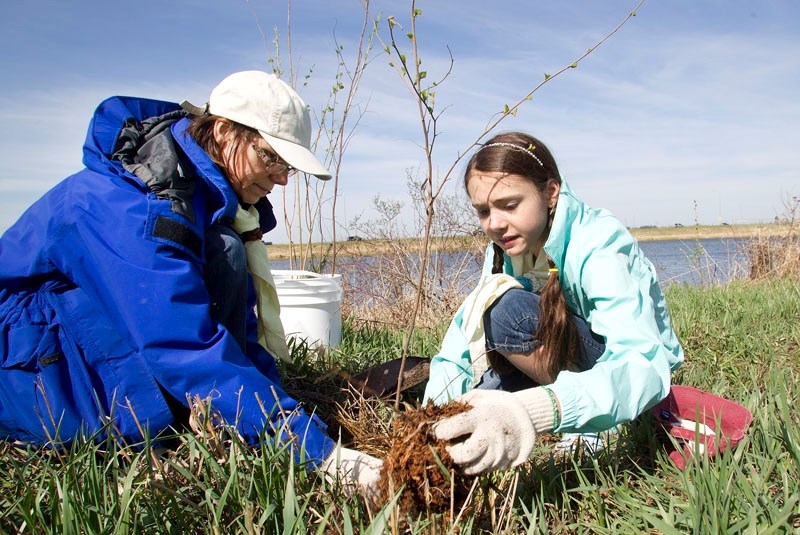Local students will spend the next year making compost, science and electricity thanks to a slew of environmental grants from the city.
City council approved $27,552.50 in Environmental Initiative Grants at its regular meeting Monday. The annual grants, overseen by the Environmental Advisory Committee (EAC), are meant to encourage environmental projects in St. Albert. The funds will go towards 12 projects, two of which are at St. Albert Catholic High School.
The first of those is a $3,600 grant to buy two Pedal-A-Watt bike stands, said Merv Rogan, outgoing EAC chair. These devices will let students convert their bikes into electrical generators, getting exercise and producing emissions-free power at the same time.
This was an innovative program, Rogan said, and likely the first permanent use of these devices in an Alberta school.
“It brings in other aspects of a healthy lifestyle such as physical fitness,” and creates no-cost clean power.
Project co-ordinator and teacher Kathy Krystofiak says the average person can create up to 215 watts of electricity using these stands, all of which can be stored in a power pack. She hopes to have students compete to see who can crank out the most volts, and to use the power to run cellphones, iPods or the school’s scoreboard.
The school also got $2,322.50 to buy about 200 seedlings for its 2012 graduates to plant along the Sturgeon River as part of a naturalization project, Krystofiak said.
J.J. Nearing Elementary received $1,575 to start the city’s first school-wide composting program.
Teacher Phyllis Kelly said she got the idea for the project after the city brought in curbside composting this summer.
“So much of the garbage we create at school is things like food waste and Kleenex,” she notes, all of which is compostable. She was a big fan of the kitchen-catcher bins the city distributed to residents, and wanted to have them at school.
The school plans to put kitchen-catchers in all its classrooms starting this January, Kelly said, each equipped with compostable bags. Students will collect the bags and put them in one of three green carts, which members of the school’s organics club will then tote to the curb for pickup. The school plans to do this for a year to show other schools that curbside composting is possible, Kelly said, and to help students form lifelong recycling habits.
“If we can reduce the amount of trash going to the landfill … that’s the ultimate purpose.”
The committee also gave the Northern Alberta Institute of Technology (NAIT) $7,188 to do a riparian health and biodiversity study of Carrot Creek, a tributary of the Sturgeon River.
This is an extension of NAIT’s ongoing research on the Sturgeon River, said project co-ordinator and biologist Laurie Hunt. Starting next summer, students and NAIT employees will survey the creek and inventory its birds, plants, and invertebrates. They’ll also run two tours of the region for curious residents. The team’s goal is to create a baseline of the region so the city can track how future development in the annexed lands affects the river.
The committee normally awards a maximum of $5,000 per grant, Rogan said, but awarded a bigger sum here because of the city’s interest in the creek.
“It is the first opportunity anyone will have to study Carrot Creek,” he says, and the NAIT team was seeking grants from many other sources. “We’re going to get the full benefit … for a small portion of the cost.”
The other grants were as follows:
• $2,500 to the St. Albert Botanic Park to buy a new compost-moving tractor.
• $4,200 to Wild Rose Elementary for an outdoor classroom.
• $1,350 to the Girl Guides of Canada and $950 to Bellerose Composite High to place native plants near Lacombe Lake Park.
• $1,200 for the Societe des Parents de l’Ă©cole Alexandre-Tache for a naturalization project.
• $1,248 to expand the Christian Reformed Church community garden.
• $1,069 to run the Seeds to Salad program at Albert Lacombe School.
• $350 for the St. Albert Christmas Bird Count.
For information on the grants, call Meghan Myers at 780-459-1735.




